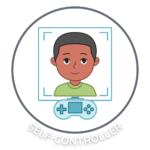
In the busy environment of a preschool classroom, teaching patience and waiting strategies can often be as challenging as it is crucial. Preschool teachers are tasked with not only educating young minds but also with instilling foundational social-emotional skills that will benefit their students for life. Among these skills, teaching preschoolers patience with waiting strategies is a cornerstone for developing self-control, respect for others, and a harmonious classroom atmosphere. In this blog post, we’ll delve into effective methods for teaching preschoolers patience, highlighted by a practical lesson plan and simple, no-prep activity ideas. Plus, we’ll introduce “My Waiting Strategies,” a printable PDF worksheet designed to visually guide children through learning this essential skill.
Why Patience is Key in Preschool
Patience teaches children the value of delaying gratification, a skill linked to success in later life stages. By mastering waiting strategies, preschoolers learn how to manage their emotions, work better in groups, and approach challenges with resilience. This makes patience not just a helpful skill but a necessity for early childhood development.
Introducing “My Waiting Strategies” Worksheet
Our free worksheet aids in teaching preschoolers patience with waiting strategies. It consists of visual cards that can be cut out and acted on, each illustrating a simple strategy for waiting. From taking deep breaths to counting to ten, these cards offer a visual and interactive way to understand and practice patience.
Lesson Plan: Teaching Patience through Play
Objectives:
- To introduce the concept of waiting and patience to preschoolers.
- To practice patience through guided activities.
- To empower students with strategies they can use to wait patiently.
Materials:
- “My Waiting Strategies” printable worksheet.
- Various classroom items for activity use.
Duration: 30 minutes
Activities:
1. Circle Time Introduction (5 minutes) Start with a circle time discussion about what it means to wait and why sometimes we need to be patient. Use simple language and real-life examples that preschoolers can relate to, such as waiting for a turn on the swing or waiting for snack time.
2. My Waiting Strategies Activity (10 minutes) Hand out copies of the “My Waiting Strategies” worksheet. Let the children cut out the visual cards. Discuss each strategy as you go, and demonstrate how to use it. For example, show them how to take deep breaths or count to ten.
3. Role-Playing Games (10 minutes) In small groups, have the children practice scenarios where they need to use their waiting strategies. One child could pretend to wait for their turn while another practices using one of the strategies from the worksheet. Rotate roles so everyone gets a chance to practice.
Conclusion
Teaching preschoolers patience is an integral part of early childhood education, setting the foundation for a lifetime of social-emotional skills. Through the “My Waiting Strategies” worksheet and the accompanying lesson plan, educators have a practical and engaging tool to introduce waiting strategies to their students. By embedding these strategies into everyday learning, teachers can foster an environment of respect, self-control, and patience in their classrooms. Remember, patience is not just taught but caught through the consistent modeling of calm and composed behavior by educators themselves.
Unlock your free material for this lesson by signing up for your free trial today – no credit card required!
Access your free materials now!
Instant access to thousands of no-prep social skills activities, over 800+ video lessons, and engaging games designed to enhance learning and development.
Sample Video
Students learn best from watching real students their own age model skills. Try out this sample video-modeling lesson below. We offer our entire Social-Emotional Learning platform free for 30 days here!
Related Blog Posts:
Changing the Channel on Big Emotions: A Guide for Educators
Social Emotional Learning Curricula for All – Tiers 1, 2, and 3
Teaching Students Self-Advocacy with Everyday Speech





